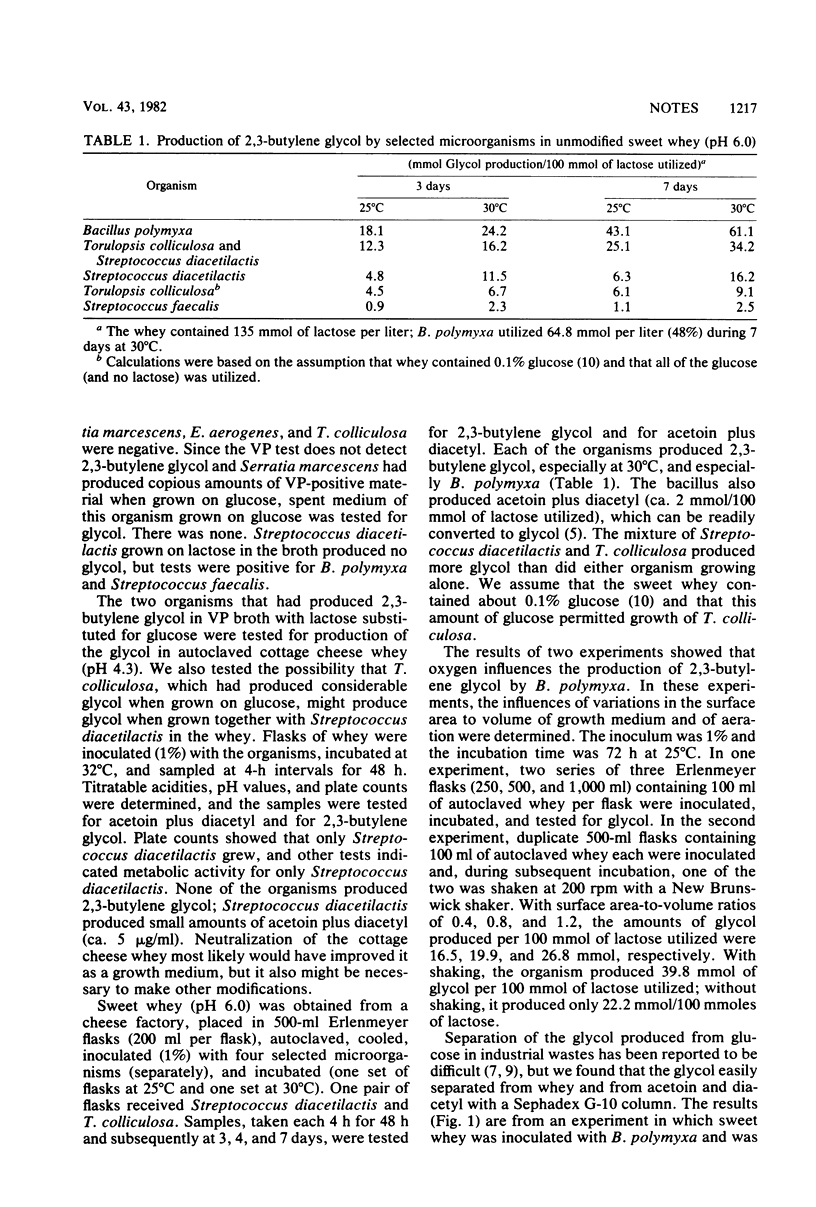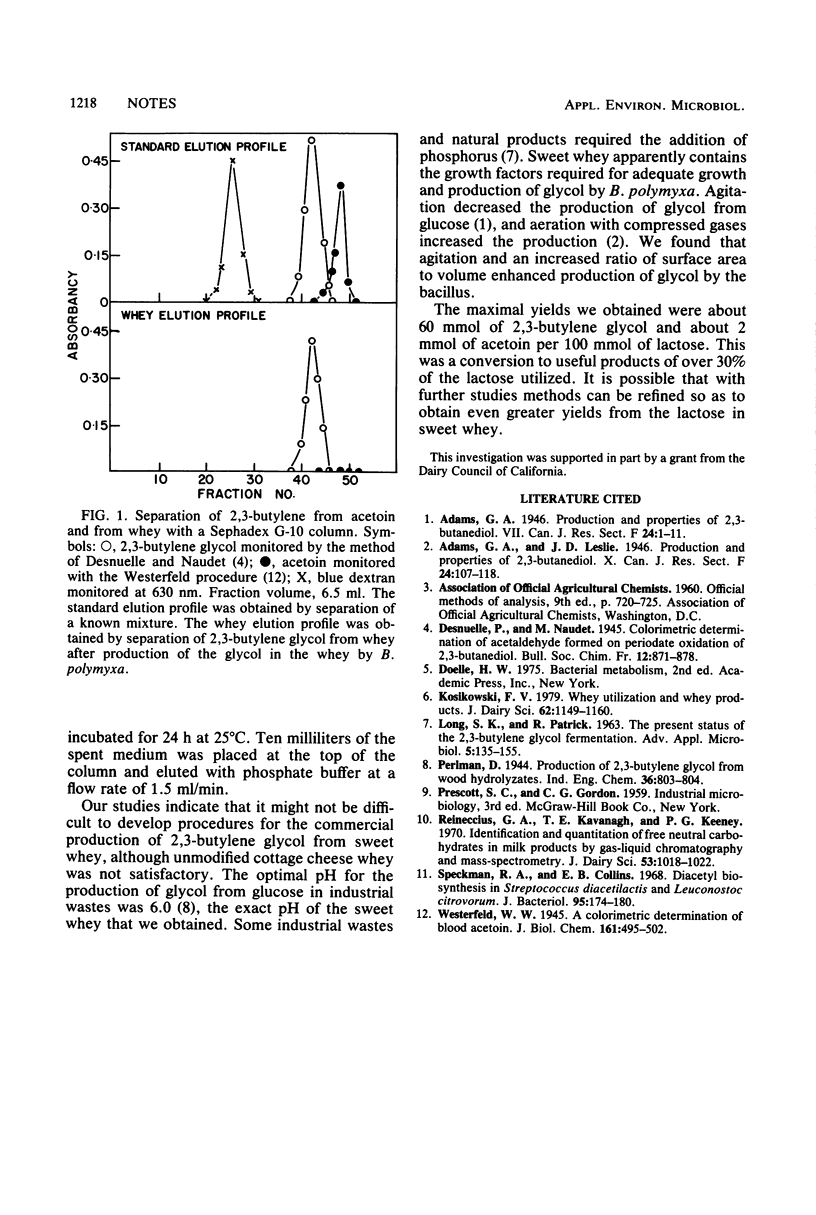Abstract
Six microorganisms that produced acetoin or diacetyl or both from glucose were tested for the production of 2,3-butylene glycol from lactose. Bacillus polymyxa and Streptococcus faecalis gave positive results and were tested in unmodified wheys. Cottage cheese whey was unsatisfactory, but B. polymyxa produced large amounts of the glycol in sweet whey, about 60 mmol of glycol per 100 mmol of lactose utilized. Aeration and an increased ratio of surface area to volume of whey enhanced the production of glycol. 2,3-Butylene was separated from the spent whey and from acetoin and diacetyl with a Sephadex G-10 column.
Full text
PDF


Selected References
These references are in PubMed. This may not be the complete list of references from this article.
- LONG S. K., PATRICK R. THE PRESENT STATUS OF THE 2,3-BUTYLENE GLYCOL FERMENTATION. Adv Appl Microbiol. 1963;5:135–155. doi: 10.1016/s0065-2164(08)70009-1. [DOI] [PubMed] [Google Scholar]
- Reineccius G. A., Kavanagh T. E., Keeney P. G. Identification and quantitation of free neutral carbohydrates in milk products by gas-liquid chromatography and mass spectrometry. J Dairy Sci. 1970 Aug;53(8):1018–1022. doi: 10.3168/jds.S0022-0302(70)86338-X. [DOI] [PubMed] [Google Scholar]
- Speckman R. A., Collins E. B. Diacetyl biosynthesis in Streptococcus diacetilactis and Leuconostoc citrovorum. J Bacteriol. 1968 Jan;95(1):174–180. doi: 10.1128/jb.95.1.174-180.1968. [DOI] [PMC free article] [PubMed] [Google Scholar]


